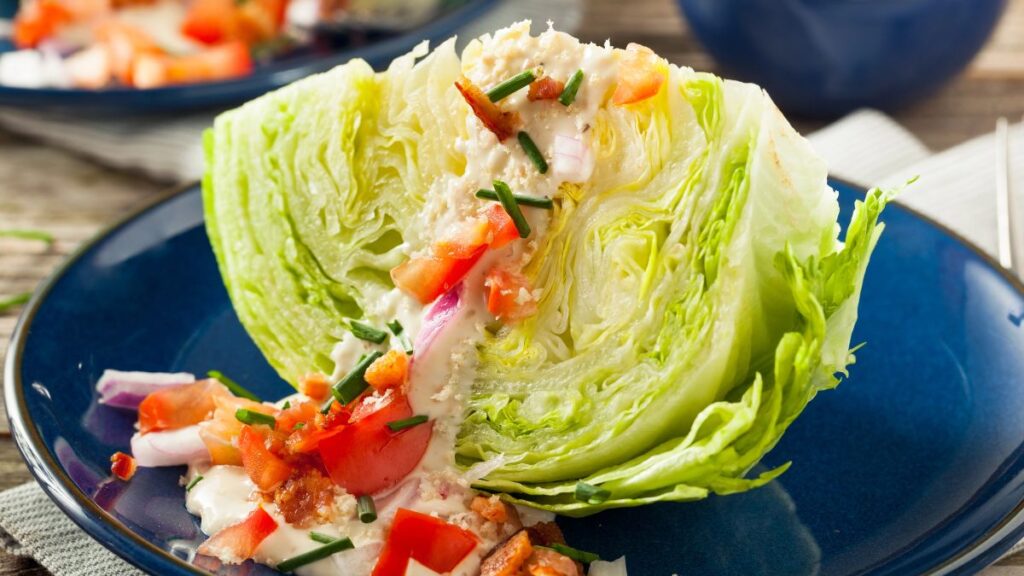15 Things You Should NEVER Order at a Restaurant
Eating out is a delightful experience, allowing you to indulge in dishes you might not cook at home. However, not all menu items are created equal; some can leave you disappointed or unwell. Knowing what to avoid can save you from a less-than-pleasant dining experience.
Whether you’re looking for quality, hygiene, or simply the most value for your money, here are 15 items you should think twice about before ordering at a restaurant. These tips will help you make smarter choices and ensure your meal is enjoyable and worth the expense.
The “Special” of the Day

The “special” of the day might seem like an exciting and unique choice, but it’s often a dish made from ingredients that need to be used up quickly. While some specials are genuinely crafted with care and creativity, others are simply a way for the restaurant to avoid waste.
For instance, that fish special could be nearing its expiration date, or the soup might be made from leftovers. Before you order, always ask the server what’s in the special and how it’s prepared. This can give you a better idea of whether it’s a special dish or just a way to clear the kitchen.
Raw Oysters

Many enjoy raw oysters, but they come with significant risks. These shellfish are filter feeders, which can accumulate harmful bacteria like Vibrio, leading to severe foodborne illness. The risk is exceptionally high if the restaurant doesn’t have a solid reputation for serving fresh, high-quality seafood.
If the oysters aren’t handled or stored correctly, the chances of contamination increase. To avoid potential health issues, cooking oysters or other seafood dishes is often safer, particularly if you’re dining at a place that doesn’t specialize in seafood.
Sushi from Non-Specialized Restaurants

Sushi is a dish that requires a high level of skill and expertise to prepare correctly. When you order sushi from a restaurant that doesn’t specialize in Japanese cuisine, you risk getting subpar fish that might not be as fresh or well-prepared. Sushi-grade fish must be handled carefully, from sourcing to storage, to ensure its safety and quality.
Non-specialized restaurants may not have the same standards or knowledge, leading to a less satisfying and potentially unsafe dining experience. For the best and safest sushi, stick to sushi bars or Japanese restaurants where the chefs have the proper training and experience.
Well-Done Steak

Ordering a steak well done might seem like a safe choice, but it can be a disservice to the quality of the meat. Cooking steak well done removes much of its natural juices, resulting in a dry, tough, and less flavorful piece of meat.
High-quality cuts, like filet mignon or ribeye, lose their tenderness and rich taste when overcooked. If you prefer your steak cooked through, consider ordering it medium or medium-well instead. This way, you’ll still get some of the steak’s natural juices and flavors without the dryness of a well-done steak.
The Cheapest Wine

While it’s tempting to save a few bucks by ordering the least expensive wine on the menu, it’s often not the best value for your money. Cheap wine at restaurants can have a significant markup, and the quality might not match your price.
In some cases, the house wine could be a generic, low-quality option that doesn’t do much to enhance your meal. Instead, consider asking the server for a recommendation in the mid-range price category. Often, you’ll find that spending a little more can get you a much better wine that complements your food and enhances your overall dining experience.
Chicken Caesar Salad

The Chicken Caesar Salad is a staple on many restaurant menus, but it’s often overpriced for what you get. The ingredients—romaine lettuce, croutons, Parmesan cheese, Caesar dressing, and grilled chicken—are inexpensive and easy to prepare. Despite this, restaurants often charge a premium for this simple dish.
The Caesar dressing can be loaded with calories, unhealthy fats, and sodium, making it less healthy than it appears. If you’re looking for a nutritious salad, consider options that include a variety of vegetables, lean proteins, and lighter dressings, or better yet, make your own Caesar salad at home for a fraction of the cost.
Anything “Market Price

When you see “market price” next to an item on the menu, it’s a red flag that you might be paying more than expected. This typically applies to seafood like lobster, crab, or particular fish, where the price can fluctuate based on availability and seasonality.
In contrast, the freshness of market price items is often touted, so asking the server for the current price before ordering is essential. Sometimes, the price could be significantly higher than anticipated, leading to sticker shock when the bill arrives. If you’re on a budget or want to avoid surprises, choosing items with a clearly listed price is better.
Vegetarian Dishes at Non-Vegetarian Restaurants

Vegetarian dishes at non-vegetarian restaurants can sometimes be an afterthought, lacking in flavor, creativity, and nutritional balance. They might be thrown together quickly without the same attention to detail that goes into the restaurant’s meat-based offerings.
For example, a vegetarian pasta dish might consist of little more than plain noodles and a basic marinara sauce, leaving you unsatisfied and questioning the value of your meal. If you’re vegetarian or simply looking for a plant-based option, it’s often better to dine at a place known for its vegetarian or vegan cuisine. These restaurants are more likely to offer flavorful, well-balanced dishes that are both satisfying and worthwhile.
Pasta with Tomato Sauce

Pasta with tomato sauce is one of the simplest and most inexpensive dishes at home, yet it’s often marked up significantly on restaurant menus. The ingredients—pasta, canned tomatoes, garlic, and a few herbs—are cheap and widely available, making this dish a poor value when dining out. Moreover, the sauce might be bland or overly salty unless the restaurant is known for its pasta or Italian cuisine, further diminishing your dining experience.
If you’re craving pasta, consider ordering a dish with more complex flavors or unique ingredients you wouldn’t typically prepare at home. This way, you’re getting more for your money and enjoying something extraordinary.
Fancy Burgers

Gourmet burgers with all the trimmings might look tempting on the menu, but they’re not always worth the price. While adding specialty cheeses, bacon, and other toppings can elevate a basic burger, these extras often come with a hefty markup.
Sometimes, the burger’s quality doesn’t justify the cost, and you might be paying more for the novelty than the actual taste. Additionally, the more ingredients piled on, the harder it becomes to enjoy the individual flavors. Sometimes, a simple, well-made burger with just a few fresh toppings offers a more satisfying meal without breaking the bank.
Buffet Items

Buffets can be tempting with endless options and all-you-can-eat appeal, but the food quality often needs improvement. Buffet items are typically mass-produced and can sit out for extended periods, leading to concerns about freshness and food safety.
The potential health risks, buffet dishes are often made with cheaper ingredients to keep costs down, meaning you’re not getting the same quality you would from a freshly prepared, à la carte dish. If you’re looking for a satisfying and high-quality meal, it’s usually better to order from the menu, where the food is made to order and served at its peak.
Fish on Mondays

There’s a saying in the restaurant industry: never order fish on Mondays. This adage stems from many restaurants receiving their seafood deliveries later in the week, meaning the fish available on Monday might be leftovers from the weekend.
While this isn’t true for every restaurant, especially those with a strong focus on seafood, it’s a good rule of thumb if you’re dining somewhere that doesn’t prioritize fresh fish. To ensure you’re getting the freshest catch, it’s better to order fish on days more likely to have been delivered recently, such as Thursday or Friday.
Bread Baskets

Bread baskets are typical at many restaurants but are not always worth indulging in. While fresh, warm bread can be a delightful start to a meal, some restaurants serve stale, reheated, or simply not of good quality bread. Filling up on bread before meals can leave you feeling too full to enjoy your main course.
If the bread basket isn’t something special, it might be better to skip it and save your appetite for the dishes you’re excited about. Instead, consider ordering an appetizer that’s more interesting and unique to the restaurant’s menu.
Iceberg Lettuce Salads

Iceberg lettuce salads are often the default option on many menus but offer little nutrition or flavor. Iceberg lettuce is mostly water and lacks the vitamins, minerals, and antioxidants in darker, leafy greens like spinach, kale, or arugula.
These salads are often topped with calorie-laden dressings, croutons, and cheese, turning a healthy choice into a less nutritious option. If you’re looking for a healthy and flavorful salad, choose one that features a variety of vegetables, lean proteins, and a light dressing. This way, you’re getting a satisfying dish packed with nutrients.
Desserts

While ending your meal with a sweet treat might be tempting, restaurant desserts are often overpriced and underwhelming. Many restaurants serve pre-made or frozen desserts that lack the freshness and quality you’d expect from a homemade treat. These desserts can be loaded with sugar, unhealthy fats, and artificial ingredients, making them a less-than-ideal choice for those watching their diet.
If you’re craving something sweet, consider skipping the restaurant dessert and treating yourself to a homemade option or stopping by a specialty bakery to enjoy a fresh, high-quality pastry. This way, you’re saving money and ensuring that your indulgence is worth it.
15 Foods Only The Wealthy and Elite Can Eat Now

Culinary trends are constantly evolving, and some foods have become more than just sustenance—they’ve become status symbols reserved for the elite.
15 Foods Only The Wealthy and Elite Can Eat Now
15 Practical Ways to Save Money During Retirement

Entering retirement doesn’t have to mean giving up a comfortable lifestyle. With strategic planning and simple adjustments, it’s possible to make the most of your retirement income and enjoy a financially secure life.







